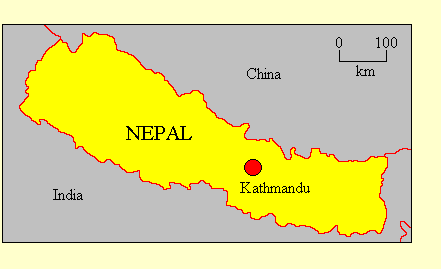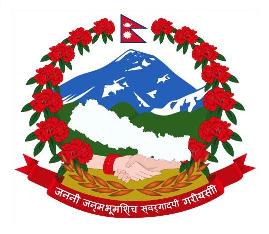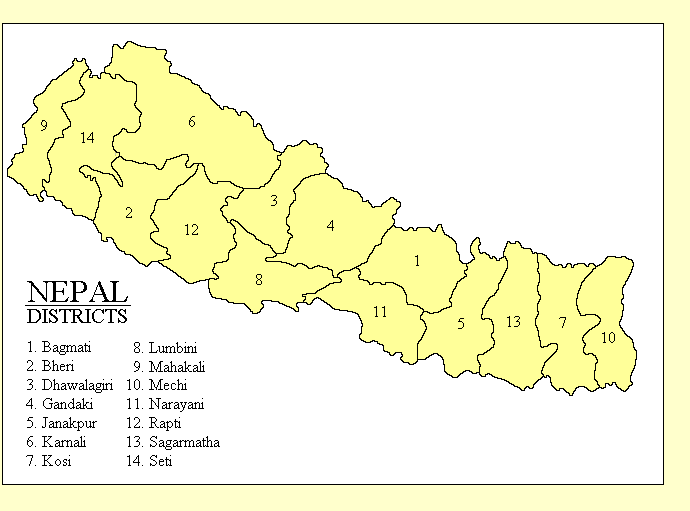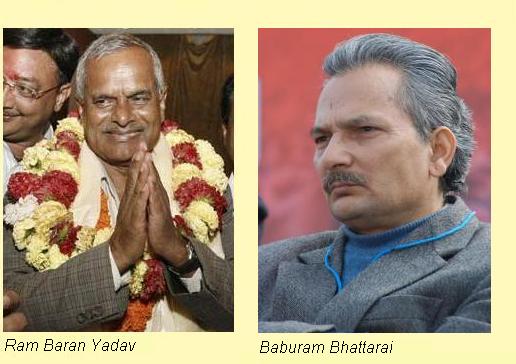
FEDERAL DEMOCRATIC
REPUBLIC OF NEPAL
• Official name: Sanghiya Loktantrik Ganatantra Nepal (Federal Democratic Republic of Nepal)
• Location: South Asia
• International organisations: Non-Aligned Movement, United Nations, World Trade Organisation
• Borders: China, India
• Coastline: None
• Land area: 140,800 Km2

• Population: 29,300,000
• Annual GDP (PPP) per capita: US$1,200 (2009 CIA estimate). World ranking: 174
• Ethnicity: About half the population is of North Indian descent. This ethnic group is concentrated in the
lowland areas and dominates Nepali economic and political life. People of Tibetan-Burmese origin occupy the
highlands, and there are many smaller ethnic groups in mountainous areas.
• Languages: Nepali, a language related to Hindi, is the official language and is spoken by about 90% of the
population.
• Religion: Hinduism (the state religion) 86.2%, Buddhism 7.8%, Islam 3.8%, other 2.2%
• Form of government: Parliamentary democratic republic. Nepal is divided into 14 districts.
• Capital: Kathmandu
• Constitution: The Interim
Constitution of Nepal came into effect on 18 May 2008.
• Head of state: The Interim Constitution makes no provision for a head of state. The Constituent Assembly
appointed Ram Baran Yadav to the position of President
for an indeterminate term on 23 July 2008. It is not clear what his constitutional functions are.
• Head of government: The Prime Minister, elected by a two-thirds majority of the Constitutent Assembly.
• Legislature: The Constituent Assembly, which has a two-year mandate to write a new
constitution for Nepal, consists of 240 members elected from single-member constituencies, 335 members elected
by proportional representation (with no threshold), and 26 nominated members, for a total of 601.

• Electoral authority: The Election Commission of Nepal
administers national elections.
• Freedom House 2009 rating: Political Rights 4, Civil Liberties 4
Political history
Nepal became a united kingdom ruled by the Saha dynasty in the 18th century. From the early 19th
century Nepal was a dependency of British India. Full independence was restored in 1923. Nepal was an absolute
monarchy, although real power was held by the Rana family, which held the prime ministership as a hereditary
office. In 1951 King Mahendra ended this system and experimented with constitutional government, but in 1962
he returned to royal government by decree.
King Birendra, who succeeded to the throne in 1972, began a slow process of reform, culminating in the
establishmnt of full parliamentary government in 1990. But successive governments of the Nepal Congress Party
were unable to solve the contentious issue of land reform, and in 1996 radicals launched a "Maoist" guerilla
campaign to overthrow the monarchy and redistribute land to the poor.
In June 2001 Crown Prince Dipendra murdered his father the King and other members of the royal family
before killing himself. This triggered a political crisis from which the monarchy never recovered. The new King
Gyanendra suspended the Constitution and tried to rule on his own, but in 2006 he gave into demands
from the political parties, backed by massive demonstrations, to recall Parliament. In 2007 the parties
decided to call elections for a constituent assembly as part of a general peace settlement. These elections took place
in April 2008, and saw a majority of seats won by the three different communist parties. The Assembly abolished
the monarchy and is now drafting a new permanent constitution. The Maoist leader Puspa Kamal Dahal was appointed
Prime Minister, but he resigned in May 2009 and was succeeded by a non-Maoist communist, Madhav Kumar Nepal. He
resigned in June 2010, but the assembly failed to chose a successor until February 2011, when another
communist, Jhala Nath Khanal, formed a government. In August the Maoists reclaimed the prime ministership,
with the veteran Maoist Baburam Bhattarai becoming
Prime Minister.

The largest party in the Assembly is the
Unified Communist Party of Nepal (Maoist). The other main parties are the
Nepali Congress Party, the traditional party of the landowners
and middle class, and the Communist Party of Nepal (United Marxist-Leninist),
which despite its fearsome name is a moderate party which detests the Maoists.
Freedom House's 2009
report on Nepal
says: "Nepal is not an electoral democracy. [The 2008] elections were found to be "generally organised in a
professional and transparent manner" by an EU observation team. However, the EU noted that the elections did
not fully meet international standards due to restrictions on freedoms of assembly, movement, and expression.
While there were some minor incidents of violence on election day, polling was generally peaceful; however,
violence was more widespread during the campaign... Corruption is perceived to be endemic in politics and
government, and enforcement of anticorruption regulations remains weak... Nepal was ranked 121 out of 180
countries surveyed in Transparency International's 2008 Corruption Perceptions Index... The legal environment
for the press has improved significantly since the April 2006 uprising... Freedom of assembly is guaranteed under
the interim constitution... Nongovernmental organizations (NGOs) played an active role in the April 2006
protests, and conditions for the groups improved somewhat following the transfer of power... The constitution
provides for an independent judiciary, but most courts suffer from endemic corruption, and many Nepalese have
only limited access to justice."
Updated September 2011
|

